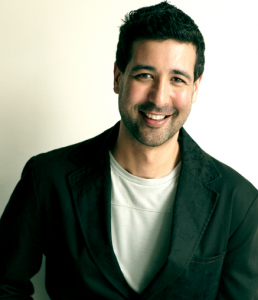Or, “Why If Not For Violent Video Games, This Novel Wouldn’t Exist”

And I couldn’t, as they were in French, after all. Subtitles aside I’d not only discovered what would become a massive, life-long creative influence but also a new figurehead to try and form my own personality upon. Dark glasses and suit jackets were as far as I got in actually emulating Godard – I was too monosyllabic to be any sort of intellectual and the one time I’d tried to smoke a Gitanes I’d vomited on the sidewalk soon after. And didn’t clean up after myself either – that’s Gaspar Noé’s Paris.
Huddled around a pile, a literal pile, of Film Comment mags in the basement of my local library (they weren’t just for Renée Zellweger disappointments on DVD and Internet porn back then), issues indexed from microfiche records, I spent days researching any and all information I could find about JLG. He’d famously dated his aspirationaly beautiful leading lady, Anna Karina, he may hold slightly leftist personal politics and claimed to have drawn creative inspiration from sources as diverse as Guy de Maupassant, Boris Pasternak, ‘40s American film noir and even comic books. His attitude wasn’t slightly apologetic like today’s public figures; it was defiant and even arrogant. If you couldn’t see what he and Truffaut and Chabrol saw in Detour and Kiss Me Deadly then bourgeois to you.
This was pre-pre-geek culture and the requisite faux-self loathing that comes uniform with the faded ‘80s iron on t-shirts and ironic beards. If an interviewer challenged Godard’s taste the only reply was an unreadable stare from a gaunt, unshaven face and dark glasses, thin line of cigarette grey wafting up. And they weren’t even colored Wayfarers or American Spirits – can you believe this prick?
You’re probably, rightfully, wondering what the hell this nostalgic drivel has to do with novel writing. Two years ago I was no longer simply rewriting the sitcom script that would eventually become my novel “Stockholm”, I was actively ruining it with only the best intentions. Much like the producers of the “Pirates Of The Caribbean” franchise would do only a year later and on a much grander scale. My scriptish-thing was thirty pages and contained three main characters, some sort of situation and probably even comedy if you defocused your eyes and looked at it from a forty-five degree angle.
So what next? As the story was set in San Francisco I couldn’t very well shoot a presentation here in LA. As I was agent-less, not employed as a comedy writer and my entire life savings was contained in a recyclable plastic water jug in the hall closet I was pretty much assed-out. The idea to develop “Stockholm” into a longer form, as a novel, was attractive if for no other reason than cost. But not only had I never written a novel before, I had no idea where to take the story. Or how to structure it. Or which part of the words you’re supposed to indent and how many spaces go after the period. To complicate the situation more than it ever needed to be, the only fiction I enjoyed reading was mid-century and primarily European – sneer away – at least I can say I’ve never read the shiny bound mulch, stamped all over the front with vaguely occult symbols, Dan Brown’s marketing cronies have shoved into the shelves in the back section of every thrift store. No, it was something far lower-brow than Tom Hanks’ questionable haircut that finally sparked my inspiration and convinced me I could write the – or maybe a – or maybe not – great American novel… “Grand Theft Auto: San Andreas”.
(GTA Spoilers) While escaping police corruption and the betrayal of my former gang members, in a stolen car, driving back roads through the country from Los Santos to San Fierro (Los Angeles and San Francisco if you’re really not paying attention) the structure presented itself. Unfolded and revealed itself, like the cityscape in that best part from “Inception” you’d already memorized from the trailer. My story would span across three American cities.
The main character in “Stockholm”, Anakin Carver, would encounter the sort of idiosyncratic personalities native to the media industry and popular culture in San Francisco, Los Angeles and New York and be drawn into their power struggles. He’d form relationships soon to turn adversarial, adversaries who’d become even more adversarial and stumble across unlikely friendships. Just like in the Grand Theft Auto games, as inspired by actual life, the main character would be introduced to the key players through existing relationships, predicated on what he could do for them. He’d start out knowing one or two people and having nothing, but as in the trajectory of any story produced by Rockstar Games (“L.A. Noire”), he would rise and fall and sort of rise again, values tested and sense of self pushed beyond recognition by his own actions and desires. Just like in the masterful “Grand Theft Auto IV”, and in turn just like in life. No novel, film or television series could have given me what I’d needed in the way I’d needed to get it the way a series of violent, humorous and thought-provoking videogames did.
And it went further than simply the structure – I recognized the opportunity for greater satire, the sort of broad targeting of the zeitgeist Rockstar Games is now famous for. I could do what I loved doing most – making fun of things that obsessed me. Chances are if I’d written this article about how a Joy Division song or Francis Bacon painting was the basis of my grand inspiration I’d be that much more likely to attract new readers, since it’s relatable and easy to understand. High art (which Joy Division is now, somehow) can inspire what is considered other high art (try using the word “novel” in casual conversation without wanting to beat yourself bloody with a bottle of Korbel outside a Brent Bolthouse nightclub) but even fifty years after the Nouvelle Vague, the cultural stratification (ooh big words) still exists, reinforced, only with new figures.
As the old villains tend to graduate a level or two in cultural relevance as their audience ages, owns property and retains editorial control of media. What I’ve learned is –
- Don’t apologize for your influences.
- Be open to inspiration, no matter the source.
- Gitanes will make you sick if you don’t smoke, and maybe even if you do.

Get an Editorial Review | Get Amazon Sales & Reviews | Get Edited | Get Beta Readers | Enter the SPR Book Awards | Other Marketing Services






















Leave A Comment